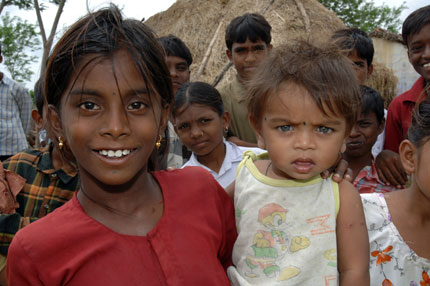A snapshot of eye health
 Globally, approximately 400 million people are blind or partially sighted. Ninety per cent of the world’s blindness exists in developing countries and is said to be both a cause and a consequence of poverty.
Globally, approximately 400 million people are blind or partially sighted. Ninety per cent of the world’s blindness exists in developing countries and is said to be both a cause and a consequence of poverty.
In Canada, more than 800,000 people are blind or partially sighed. Since the most common eye diseases are age-related and Canada’s aging population continues to increase, the number Canadians with blindness or partial sight is expected to double in the next 25 years.
The impact of vision loss is far-reaching. It affects work, income, self-esteem, dignity, family relationships, the ability to drive, leisure activities, community involvement and the activities of daily living. People who lose their sight may not enjoy the same rights and benefits that other Canadians enjoy, and they may experience social isolation and stigma. And while vision loss itself may not be fatal, it can precipitate other serious health impacts, such as clinical depression, and for seniors, falls and early admission to nursing homes.
In addition to having a direct impact on a person’s independence and quality of life, vision loss also carries a significant economic impact. The financial cost of blindness and partial sight in Canada alone is estimated at $15.8 billion per year, with direct costs to the health care system at $8.6 billion.
Astonishingly, about 75 per cent of vision loss is actually preventable or treatable. This is why Vision2020Canada is committed to working on a national and international level to eliminate avoidable blindness under the global initiative, Vision 2020: The Right Sight.
The Cost of Vision Loss in Canada: Summary Report 2009
 In 2008, CNIB and the Canadian Ophthalmological Society commissioned Access Economics Pty Limited, a world-leading independent economic consulting firm, to conduct a comprehensive study on the cost of vision loss in Canada and its impact on governments, employers, and all Canadians.
In 2008, CNIB and the Canadian Ophthalmological Society commissioned Access Economics Pty Limited, a world-leading independent economic consulting firm, to conduct a comprehensive study on the cost of vision loss in Canada and its impact on governments, employers, and all Canadians.
Specialists in model-based health forecasting and analysis, Access Economics has completed two previous cost of vision loss studies, on Australia and the United States.
This is the first such research in Canada. Using prevalence-based and conservative methodology, the study builds on existing, authoritative sources of Canadian data and research. It takes into account Canada’s multicultural society and future demographic trends. It uses known costs wherever possible, accurately reflecting real Canadian expenditures and government policies. The findings are extensive, and they are without question the most definitive data now available. This document provides a summary of the full report, The Cost of Vision Loss in Canada, which was released concurrently in 2009. In addition, this summary provides supplementary data, research and analysis to broaden and provide context for the understanding of the impact of vision loss in Canada.
Read the study.
World Health Assembly Resolution 56.26
In 2003, in recognition of the growing crisis in vision loss
in Canada and around the world, the Canadian government was instrumental in
helping to pass a resolution called The Global Initiative for the Elimination
of Sight Avoidable Blindness (also known as Vision2020: The Right to Sight) at
the World Health Assembly, the highest decision-making body of the World Health
Organization (WHO). Canada made a commitment to the World Health Organization
to develop and implement a vision health plan by 2005. Resolution 56.26 called
on all WHO member states to develop national vision plans with the goal of
eliminating avoidable vision loss by 2020.
The Resolution can be read here.
http://www.who.int/pbd/en/WHA56.26.pdf